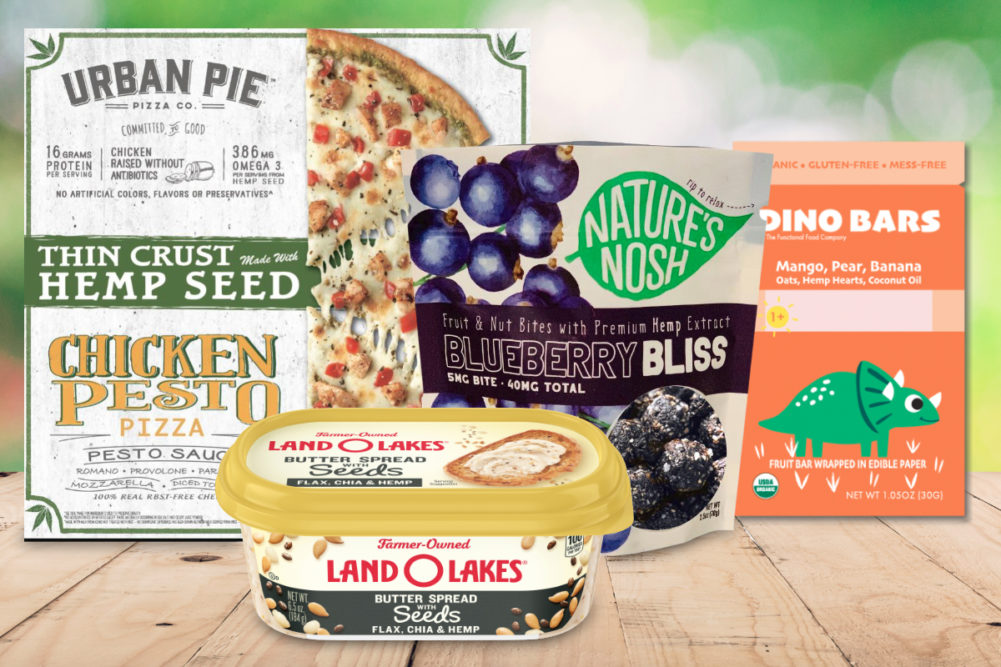 CHICAGO – What do you do with this stuff? That’s a question Ben Raymond, director of research and development at Victory Hemp Foods, Carrollton, Ky., is often asked about the hemp ingredients the company offers. His answer – almost anything.
CHICAGO – What do you do with this stuff? That’s a question Ben Raymond, director of research and development at Victory Hemp Foods, Carrollton, Ky., is often asked about the hemp ingredients the company offers. His answer – almost anything.
“History confirms that the world looks to America to lead change, be it industrial, cultural or environmental,” said Geoff Whaling, chair, National Hemp Association, Washington. “This is more true today than ever before, as we look to combat the global climate crisis affecting humankind. We know American ingenuity will drive many of these solutions and can do so with plant-based technologies. Hemp, America’s newest commodity crop, will be at the forefront of this regenerative economic and social shift; helping create jobs, clean our soil and air, and introduce sustainable new products once only dreamed about.”
The hemp industry, however, is about a century behind in breeding, as compared to corn and soy.
“Getting the economics right is really a factor of making sure that we have crops that are commercially viable for farmers to grow on large scale agriculture plots,” said Chad Rosen, founder and chief operating officer of Victory Hemp Foods, at The Future of Food @ SXSW event, which took place virtually March 18-21. “We need consistent genetics that are easily harvestable.”
Mr. Rosen said that up until now, the challenge in formulating with hemp-derived ingredients was their format. He recognized that the scale of this new sustainable, commodity crop would come if the ingredients “offer manufacturers compelling taste and performance advantages” in the plant-based space.
“We look at it as an oil seed,” Mr. Rosen said. “We fractionate them into oil and protein, and we do it in a way that doesn’t use harmful chemicals. We increase the functionality of the protein to fit into a variety of (food and beverage) categories.”
Hemp seeds do not naturally contain cannabidiol (CBD) or tetrahydrocannabinol (THC), which are compounds found in other parts of the cannabis plant. The seeds are about one-third protein, providing all nine essential amino acids, which makes it a complete protein, much like soy and animal. Hemp seeds also are rich in heart-healthy fatty acids. Many hemp grain products are “generally recognized as safe” (GRAS) and exempt from food additive tolerance requirements.
“We support formulators with application development,” Mr. Rosen said. “But we focus most of our energy on developing processes by which we can extract the most value and make the ingredients the most functional for those formulators.
“Traditional hemp protein includes the shells of the hemp seed, which contain tannins and chlorophyll, contributing to its green color and bitter notes. (Our) processing gives us protein from the heart of the seed, resulting in a more than 70% protein powdered ingredient with a very mild flavor profile and almost white color. We’re delivering formats of concentrated proteins, and are working on texturized proteins and soluble proteins.”
“Hemp, America’s newest commodity crop, will be at the forefront of this regenerative economic and social shift; helping create jobs, clean our soil and air, and introduce sustainable new products once only dreamed about.” – Geoff Whaling, National Hemp Association
The company also plans to fractionate the oil into its omega-3 and omega-6 fatty acids. This will extend the oil’s shelf life, lending it better to spreads and vegetable margarine applications.
“Anywhere you use extra-virgin olive oil, hemp seed oil works great,” Mr. Raymond said. “The protein, I think, is the real game changer. It’s another plant option for protein bars, drink mixes and meat analogs. The two major proteins in hemp hearts — edestin and albumin — are easily digested and offer compelling functional characteristics, including holding oil and water.”
The GRAS status has created more opportunities for formulators interested in working with the ingredients.
“We’re seeing a lot of manufacturers who are marketing from their nutrition labels,” Mr. Rosen said. “They want to put hemp on the front of the package and in the nutrition label on the back.”






